Freely drawn from the original text by Mary H. Dickson and Mario Fanelli, CNR Institute of Geosciences and Georisorse, Pisa
Heat is a form of energy and, literally, geothermal energy is the heat contained within the Earth. It is at the origin of many geological phenomena on a planetary scale. However, the expression "geothermal energy" is generally used, in common use, to indicate that part of the earth's heat, which can, or could be, extracted from the subsoil and used by man. All modern thermal models of the Earth must take into account the heat produced continuously by the decay of long-lived radioactive isotopes of uranium (U238, U235), of thorium (Th232) and potassium (K40), present within the globe. To the radiogenic one, other sources of heat are added, in not exactly defined proportions, such as the primordial heat of the planet.
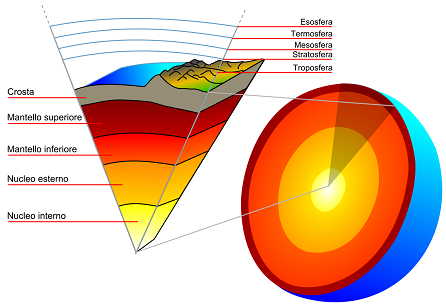
crust, mantle and core.
It has been estimated that the total heat contained in the Earth, assuming an average surface temperature of 15 ° C, is of the order of 12.6x1024 MJ and that the heat contained in the crust is of the order of 5,4x1021 MJ (Armstead, 1983).The thermal energy of the Earth is therefore enormous, but only a part of it can be used by man. Until now, the use of this energy has essentially been limited to those areas in which the geological conditions allow a vector (water in the liquid phase or vapor) to "transport" heat from deep hot formations to or near the surface. , forming what we call hydrothermal resources. However, new ways could be opened in the near future by innovative methods and cutting-edge technologies, some already in the demonstration phase, to use many other types of geothermal resources.
In many areas, especially in the past, practice has often preceded theory. Many resources, including geothermal energy, were used, at the beginning, without knowing exactly their nature and only later were they scientifically studied and the technology developed.
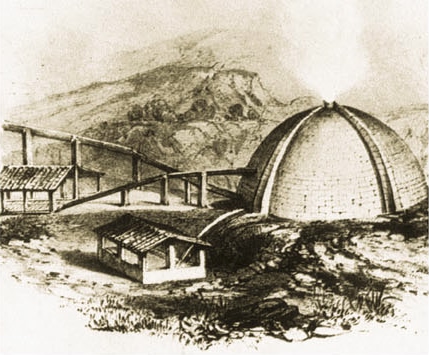
Printed by Geothermal Museum
Geothermal fluids were already used, for their energy content, in the first part of the nineteenth century. At that time, in the area that later took the name of Larderello (Tuscany), a small chemical industry was built to extract boric acid from hot waters, which they gushed naturally from the ground or were extracted from shallow wells. Boric acid was obtained by evaporating the hot boron-rich fluids in metal kettles, using wood from nearby woods as fuel. In 1827 Francesco Larderel, owner of this industry, devised a system to use the heat of the boric fluids themselves in the evaporation process, instead of burning the wood of the woods, which were rapidly running out. In the same period, the mechanical energy of natural steam also began to be used. This was used to raise the water in simple "gas lift" systems and, later, for the operation of pumps and winches used in drilling operations or in the boric acid industry. The chemical industry of Larderello held, between 1850 and 1875, the monopoly of the production of boric acid in Europe. In the same geothermal area, between 1910 and 1940, the use of low pressure steam for the heating of residential and industrial buildings and greenhouses began, gradually expanding. In 1928 Iceland, another country at the forefront of the use of geothermal energy in Europe, also began to use geothermal fluids, especially hot water, to heat buildings.
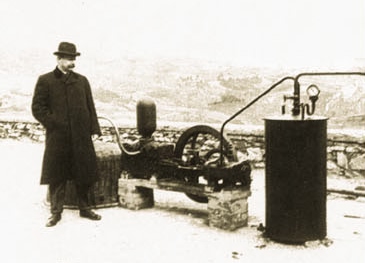
Printed by Geothermal Museum
The first attempt to produce electricity from the energy contained in geothermal steam was made in Larderello in 1904. The success of this experiment showed the industrial value of geothermal energy and marked the beginning of a form of usage, which is now widespread in many countries. The production of electricity in Larderello was a commercial success, as well as of the technique, so much so that, in 1942, the installed geothermal power had reached 127,650 kW. The Italian example was followed by numerous other countries. In 1919 the first geothermal well was drilled in Japan, at Beppu, and, in 1921, in the United States, at The Geysers in California. In 1958 a first geothermal power plant went into operation in New Zealand, in 1959 in Mexico, in 1960 in the United States and in the following years in many other countries.
Depending on the temperature of the fluids, geothermal resources have been used in numerous applications.
In this brief summary we focus in particular on the use of deep geothermal resources by means of large geothermal plants (Deep Geothermal technologies), which is of main interest for the Geothopica database.
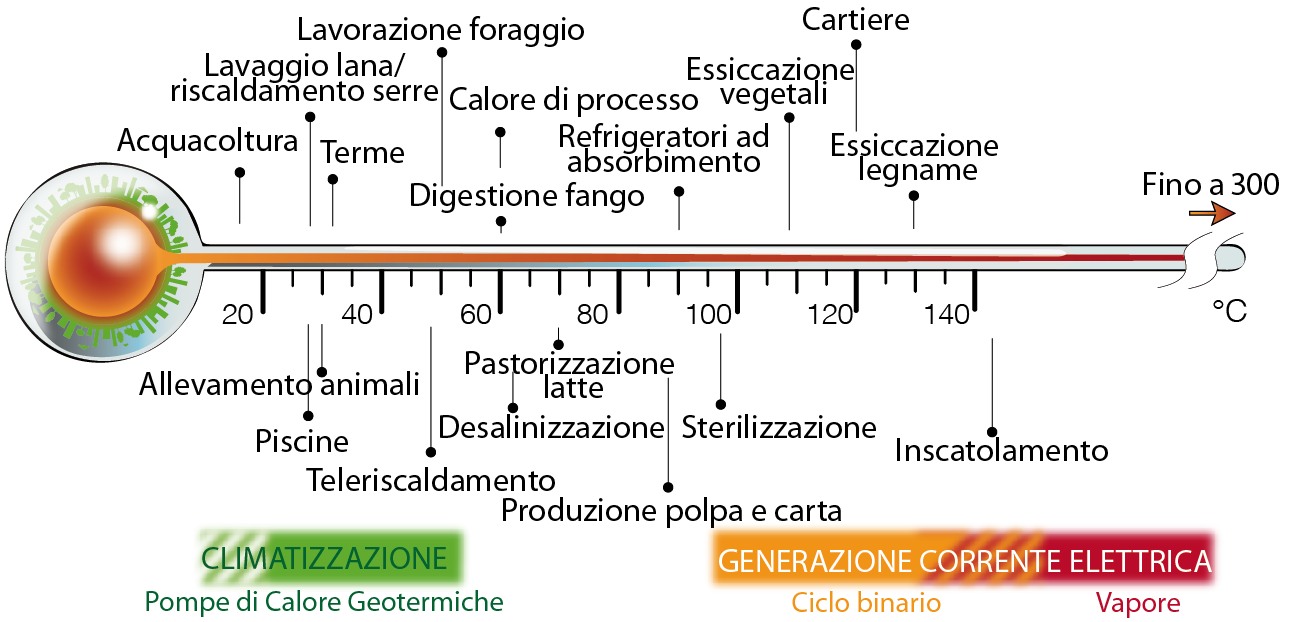
To deepen these notes and learn more about the various geothermal applications, including those with heat pumps (Shallow Geothermal technologies), you can read the documents published by the CNR
Bibliografia
ARMSTEAD, H.C.H., Geothermal Energy, E. & F.N. Spon, London, 1983, 404 pp.





